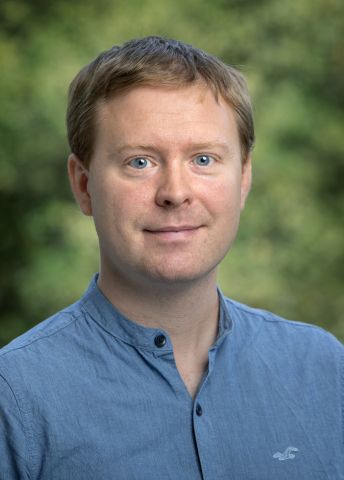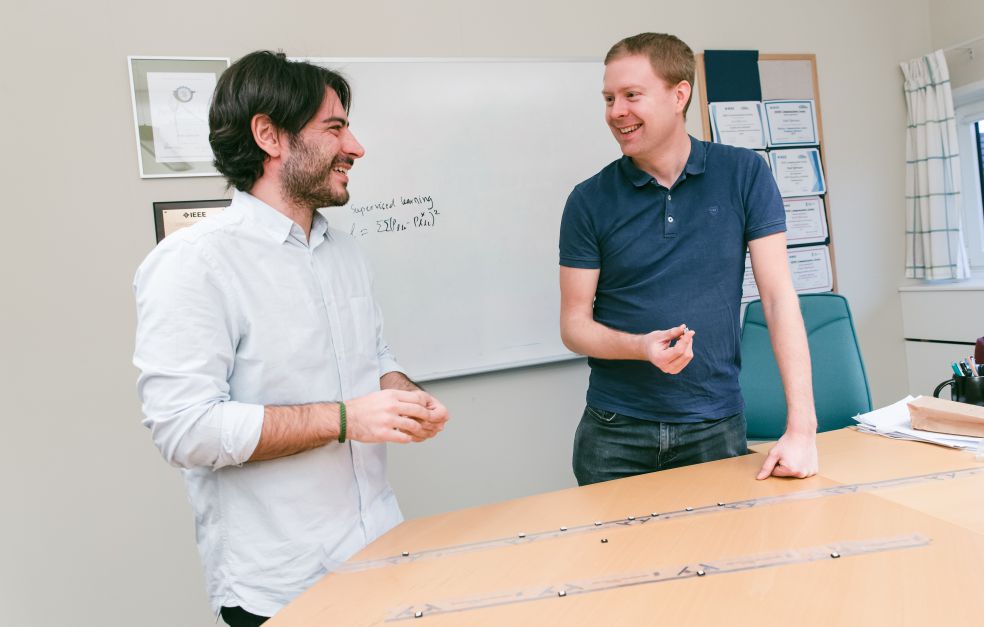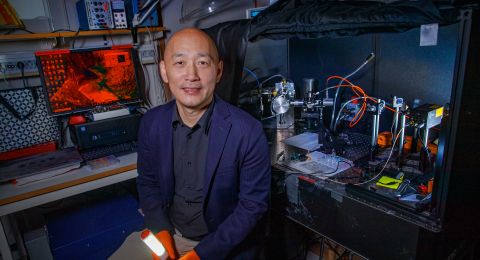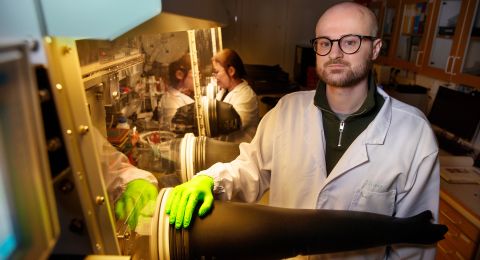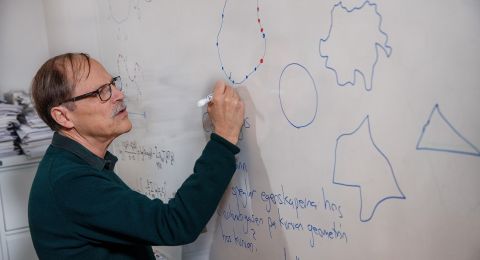5G technology enables us to transfer more data than ever before – but also poses challenges. It requires numerous miniature antennas that need to be inexpensive and energy-efficient, which distorts the signals. Emil Björnson at KTH wants to address the problem with better algorithms.
Emil Björnson
Professor at the Department of Communication Systems
Wallenberg Academy Fellow 2019
Institution:
KTH Royal Institute of Technology
Research field:
Signal processing, MIMO (a wireless digital data transfer technology), machine learning, energy efficiency
Björnson likes to draw parallels when explaining his ideas. He describes present-day mobile masts, with a large antenna transmitting signals, as being like floodlights. 5G masts will instead be fitted with numerous small antennas jointly aimed at mobile devices. They are like spotlights in that they detect where mobile signals are coming from and target the right user.
“What’s cool about this is that you don’t have to move things around mechanically – each miniature antenna can aim its signal without moving. At present there is not enough capacity if there are many users in a given area. But 5G means we don’t have to share the cake – the more people want a slice, the bigger the cake gets,” Björnson says.
Each antenna requires a small circuit that detects incoming signals from mobile phones, and new computations are made every millisecond. When the technology first began to be discussed ten years ago, many people in the industry were skeptical. It was commonly thought that it would not be feasible to transmit so much data. The panels containing a multitude of antennas would be too heavy to install in the masts, and the whole technology would be too costly and energy-intensive.
“But it’s now been shown that 5G can actually cope with more data – maybe ten times more traffic from a single base station. Even if data traffic rises by about 50 percent a year, we’ll be able to cope with demand for quite a few years to come. But it’s true that it costs more and uses a lot of power. That’s what my research is about.”
“The Foundation is going against the flow by make long-term commitments to people they believe in – it’s refreshing. When I see the names of others who’ve been appointed as Wallenberg Academy Fellows, I feel that I’ve achieved something in my career.”
Signals adapting to distortion
Björnson describes it as a meeting of two worlds: one theoretical, in which the signal computations are based on the assumption that the antennas are perfect; and one practical, in which the electronics have to be built in the real world. If the components are made almost perfectly, they consume a huge amount of power. If they are instead made more cheaply and are more energy-efficient, they cause distortion of the signal. Björnson’s research aims to create algorithms that compensate for this.
“Instead of altering the technology and trying to suppress or drown out the distortion, we want to learn what causes it. If we do, we’ll be able to create signals that only ‘sound good’ once the distortion has been added to them.”
The algorithms also have to be adapted to changes in the surroundings that may affect the hardware itself, such as temperature fluctuations. Apart from the 5G mast antennas, Björnson’s algorithms may come to good use in other electronics, such as miniature sensors.
“As society becomes increasingly digitalized, we will have devices connected up everywhere, many of them battery-driven. It’s essential they be as energy-efficient as possible, but the more you reduce energy consumption, the more distortion you get. Instead of trying to make the devices as ideal as possible, I want to modify how the signals are transmitted, so they can be full of distortion, but still transfer information.”
A love of explaining
It was mostly by chance that Björnson ended up specializing in distortion and signal processing. True, he liked technology and electronics when he was young, having acquired his first computer at the age of nine. He was also inspired by his brother, who collected SIM cards from around the world. But his plan was to become a university lecturer. He liked explaining things, and felt he was good at it. And teaching is now a central part of his work as a researcher.
In addition to lecturing and training researchers, he runs a YouTube channel and a podcast on which he and his colleagues talk about research and mobile technology. The YouTube channel has 12,000 subscribers, and has taken him all the way to Australia, where he was asked to give expert testimony in a court case in which the country’s competition authority was litigating against some mobile operators and needed help in explaining the technology to the court.
“A communications officer at the university once asked me whether anyone apart from my students watches my lectures online. The local students actually make up only about one percent of viewers. I held an advanced course last spring that usually attracts at most ten students on campus. It’s been viewed over a thousand times.”
Björnson’s research spans multiple fields of knowledge; algorithm design, hardware development and pure physics, which normally are separate from each other. He is happy to consult experts in the various fields to ensure his own views are consistent with theirs.
“But you have to choose carefully who you talk with – people who really believe that things can change. Most of what’s possible in theory sooner or later becomes possible in practice. But people who’ve worked on practical applications for many years will be skeptical to start with. You have to remember that the miniaturized antenna technology that is mainstream in 5G was ridiculed only ten years ago.”
Text Lisa Kirsebom
Translation Maxwell Arding
Photo Emil Björnson, Emma Axelsen, Anna Nilsen, Marcus Marcetic
